Vision & Mission
Physiology is indeed an explanation of life. What other subject matter is more fascinating, more exciting, more
beautiful than the subject of life? - Arthur C Guyton
Physiology is a basic medical science taught to the health care students which explains about the functions of each system and how they coordinate to maintain good health. The department of Physiology is situated on third floor of the medical college building; has excellent infrastructure and faculties with wide experience and knowledge in different fields of Physiology thus providing quality teaching, research in innovative and emerging fields and clinical services in the university. The department of Physiology adopts a blended approach in imparting medical education which is open to newer concepts in medical education as well as retaining the time-tested teaching-learning principles. The departmental faculties have their expertise in areas like, neurophysiology, exercise physiology autonomic function testing.
Vision
- To develop global competencies amongst students.
- To Achieve excellence in learner-centred academic experiences that enhance health in the global community.
- To promote ethical and value-based learning
Mission
- Provide students with an outstanding educational experience that prepares them for careers in the Health Professions, Biomedical Research, and Academia.
- Conduct innovative and cutting-edge research that addresses vital issues related to human health and physiology.
- Advocate for excellence in education and healthcare for underrepresented population.
- Provide an environment that permits faculty, and students the opportunity to further develop their professional skills and expertise and realize their potential as educators.
- Promotion of disciplinary and interdisciplinary research and learning that will foster the creation of new knowledge.
- To promote research in physiology that will aim at prevention of diseases and promotion of health to establish our subject as Preventive and Promotive Physiology.
HOD Profile
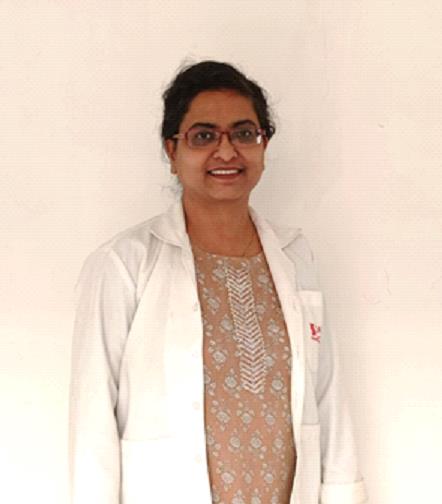
Name:- Dr. Ashwini Patil
MBBS, MD Physiology

Name:- Dr. Ashwini Patil
MBBS, MD Physiology
Dr. Ashwini Patil has obtained her MBBS and MD degree from Maharashtra University of Health Sciences, Nashik. Presently she is serving as the Professor and Head of Department, Physiology at SMCW, Pune. Having a keen interest in academics and research, she is also pursuing PhD in Medical Physiology.
Experience:
She has over 12 years of academics, research, administrative and industry experience.
Achievements:
She has served as examiner in several universities for medical and allied disciplines. She has guided many students for research projects/ thesis/ dissertations; has completed ACME - Advanced Course in Medical Education.
Paper Publications::
She has various publications in national and international journals, and a book chapter to her credit. She has presented multiple papers at national and international platforms. She also serves as reviewer for esteemed journals.
Infrastructure facilities
The department has well equipped Haematology lab, clinical lab, Amphibian lab and clinical research lab with advanced instruments. All laboratories are well equipped with traditional as well as innovative and modern teaching aids. Symbiosis in its effort to provide latest teaching material to students will be conducting some part of clinical Physiology teaching on “METIMEN” which is a high-fidelity simulator, an innovative and cutting-edge teaching learning technology, for teaching clinical examination in a simulated environment.
The department has a library with books covering regular undergraduate teaching as well as higher studies and research in various related fields.
Haematology Laboratory
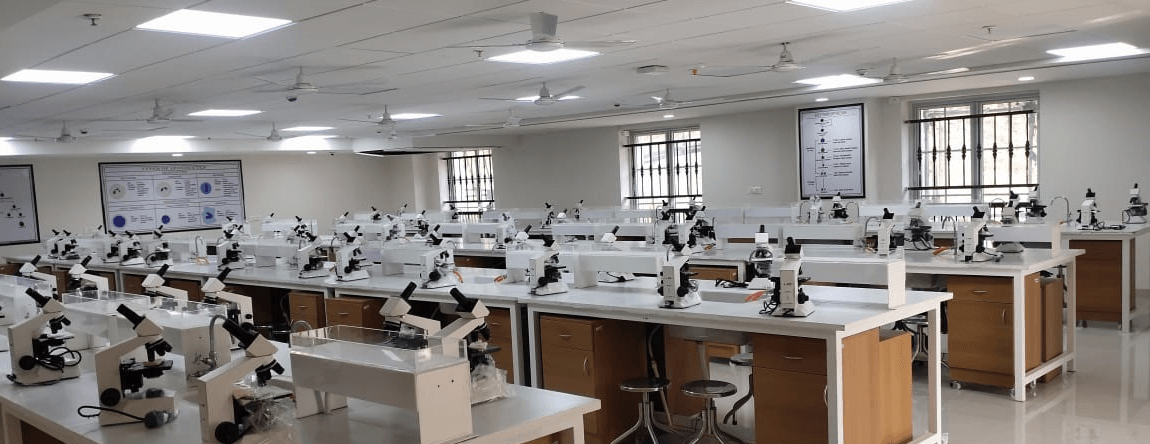
Ambhibian Laboratory
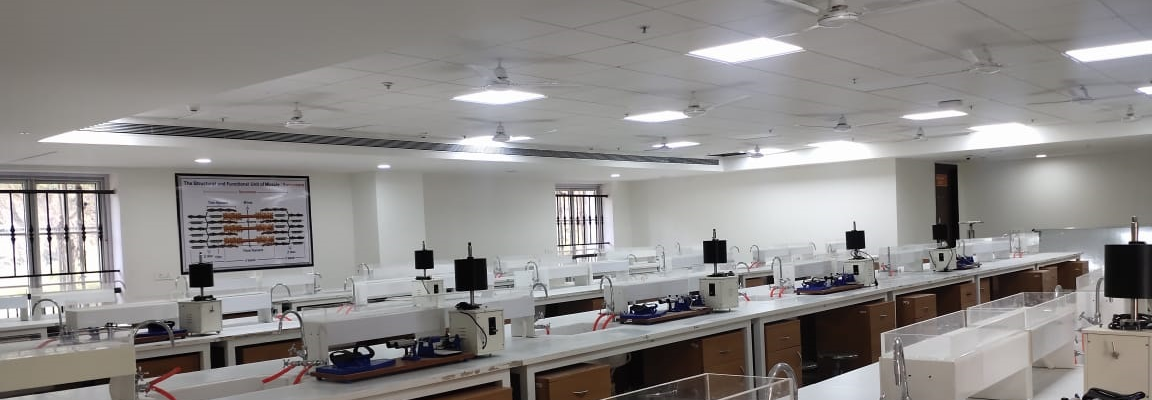
Clinical Physiology Laboratory
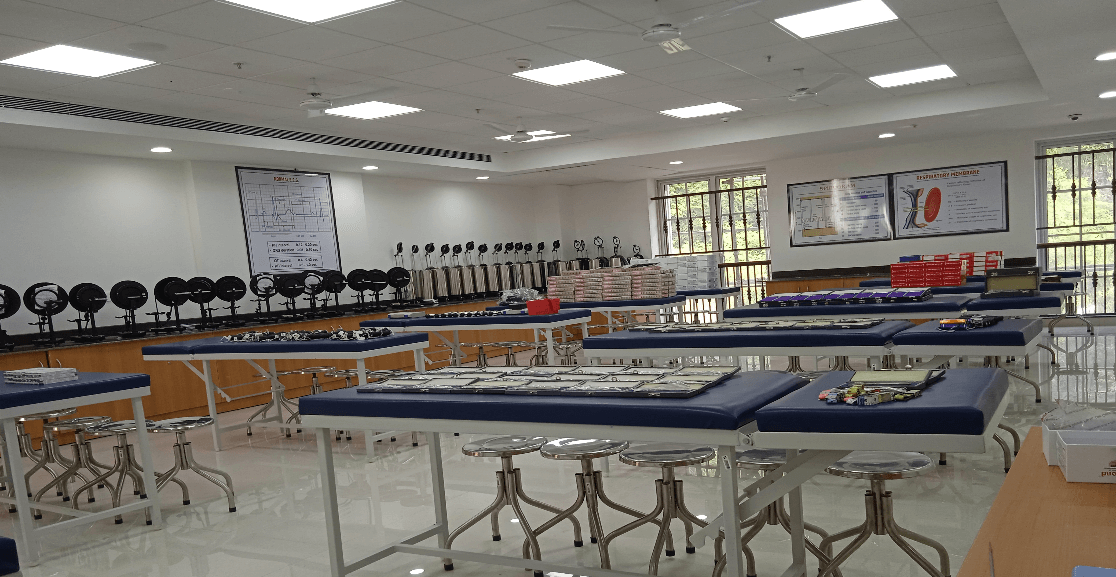
Mammalian Laboratory
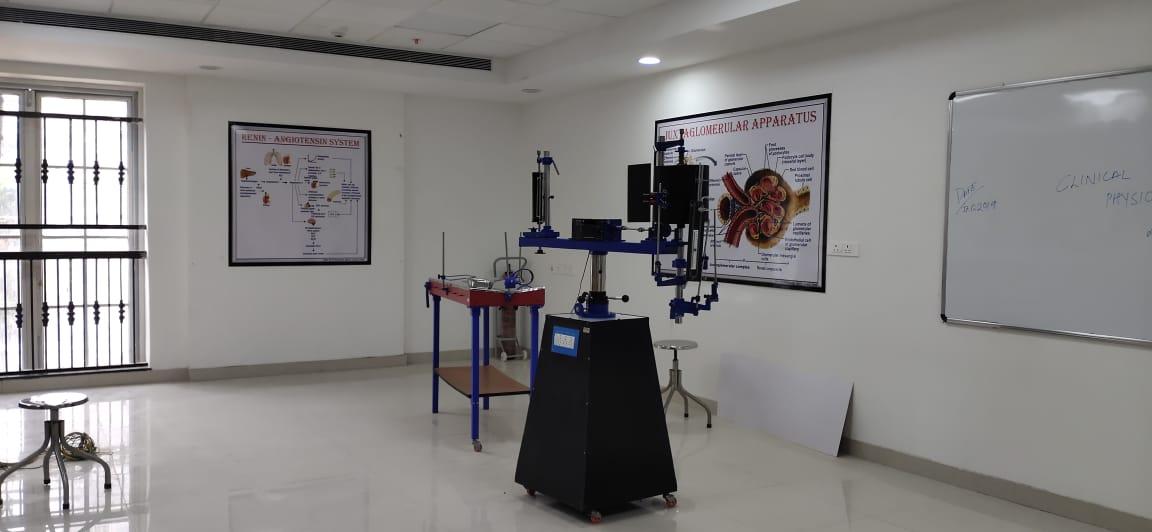
Role Play

BLS Training

METIMEN (High fidelity simulator)

Services
Establishment and development of the following labs in process:
- Clinical neurophysiology.
- Cardio-respiratory.
- Exercise physiology
- Metabolic / Endocrinology / Reproductive Bio-medicine
Research Publications
Dr Ashwini Patil, (Professor & HOD)
|
1 |
2017 |
Patil AN, Handergulle SM, Influence of menopause on cardiovascular responses to behavioral stressors: A comparative study. Natl J Physiol Pharm Pharmacol 2017 710 1014-1019 |
|
2 |
2018 |
Patil AN, Pande B, Borade N, Learning to learn and teach: Student seminar as a teaching-learning method in undergraduate medical physiology through students perspective. Natl J Physiol Pharm Pharmacol. 201; 8, 10, 1356-1361. |
|
3 |
2019 |
Patil A, Bhavya Chaudhury S, Srivastava S. Eyeing computer vision syndrome: Awareness, knowledge, and its impact on sleep quality among medical students. Ind Psychiatry J. 2019; 28, 68, 74. |
|
4 |
2019 |
Pande BN, Patil AN, Gender differences in cardiovascular autonomic function status in normal healthy individuals: A cross-sectional study. Natl J Physiol Pharm Pharmacol. 2019; 9(7), 595-599. |
|
5 |
2020 |
Patil KB, Patil AN, Septal cholinergic neuromodulation of hoarding behaviour in male Wistar rats. Pravara Med Rev. 2020; 12(03), 81-86. |
|
6 |
2020 |
Sorte SR, Rathod SR, Mohite K, Kasat P, Muthiyan G, Ahirwar A, Patil AN. Interactive pen digitizer to foster teaching. Fiziologia. 2020; 100; 81-85. |
|
7 |
2021 |
Patil KB, Patil AN, Noradrenergic Neuromodulation of Septal Circuitry Mediating Hoarding Behaviour in Male Wistar Rats. J Krishna Inst Med. Sci. Univ. 2021; 10(1), 37-43. |
|
8 |
2021 |
Sorte S R, Rathod S B, Patil A, Ahirwar A. Decoding the Cardio-vascular Pathophysiology in Covid-19: A narrative review (Accepted as chapter in the book. Highlights on Medicine and Medical Science. Vol.4, 1–10. https://doi org/10 9734/bpi/hmms/v4/2194F. |
|
9 |
2021 |
Deshmukh MP, Patil AN, Baxi G, et. al. Immediate effect of primal reflex release technique on heart rate variability in chronic neck pain: a case report. Int J Health Sci. Res. 2021; 11(6):157-160. |
|
10 |
2021 |
Patil AN, Pande BN, Sorte SR, Borade NG, Saraf CA, Kadu S. Comparison of Cardiovascular Autonomic Function Status in Normal Healthy Individuals of Various Ayurveda Prakritis. J Pharm Negative Results. 2021;12(2):32–36. |
|
11 |
2022 |
Patil AN, Patil KB, Naloxone-induced septal neuromodulation of hoarding behaviour in male Wistar rats. Journal of Datta Meghe Institute of Medical Sciences Accepted for publication. |
|
12 |
2023 |
Jayakumar R, Tanaji Methre S, Namdeorao Patil A. Association of health literacy and physical activity with physical fitness level among adults. Biomedicine 2023 Sep. 20, cited 2023 Nov 6 43(4) 1329 34. |
|
13 |
2024 |
Sorte SR, Sande S, Rathod SB, Vij VA, Gumashta J, Muthiyan G, Patil A. Concept mapping a potential pedagogical strategy to foster meaningful learning in physiology students. J Educ Health Promot. 2024 Feb 7;13:2. doi: 10.4103/jehp.jehp_728_23. PMID: 38525215; PMCID: PMC10959259. |
|
14 |
2024 |
Patil AN, Patil KB, Prasad N, Dighe TA. Distribution of Cardiovascular Dysautonomia Pattern across Different Stages of Chronic Kidney Disease. J.Sci.Soc 2024 July 51(2):204-6. |
|
15 |
2024 |
Patil AN, Patil KB. Naloxone-induced septal neuromodulation of hoarding behaviour in male Wistar rats. Journal of Datta Meghe Institute of Medical Sciences. (Accepted for publication). |
|
16 |
2024 |
Team based Learning Approach, Peer Tutoring & Innovations in Medical Undergraduates during Covid 19 Pandemic. |
Dr. Sagar Chavan (Associate Professor)
Dr. Trupti Borulkar (Associate Professor)
|
1 |
2016 |
Gurav T, Wankhede S, Effects of yoga on depression, anxiety and stress of women. Medpulse International Medical Journal. Nov. 2016; 3. 11, 939-940. |
|
2 |
2021 |
Trupti B, Purushottam G, Bharti R, Sharadchandra W, Study the Effect of Yogic Exercise on Depressive Symptoms among Adults. International Journal of Health and Clinical Research -2590-3241 2590-325X 04 2021 |
|
3 |
2021 |
Afshan K, Trupti B, Shaista S, Anwaya M, Uzma A. Effect of structured lecture on the knowledge and practices of menstrual health in adolescent girls of urban slum. National Journal of Physiology, Pharmacy and Pharmacology. December, 07, 2021. |
|
4 |
2021 |
Afshan K, Sayed D, Trupti B. Assessing an assessment tool: Analysis of multiple choice questions on difficulty level and discrimination power, from an assessment in physiology. National Journal of Physiology, Pharmacy and Pharmacology. 12.06.2022. |
|
5 |
2023 |
Mujtaba N, Ashna A, Trupti G, Afshan K, Sainath L. Study of correlation between body mass index with right and left hand grip strengths in laborers. Journal of Cardiovascular Disease Research. 10, 2023. |
|
6 |
2024 |
Jha H Jain U Farooqui S Borulkar T The Future of Healthcare: How Precision Medicine is changing The Game -A Systematic Review Afr.J.Bio.Sc.6.12(2024) |
|
7 |
2024 |
Role of indocyanine freen for sentinel lyph node biopsy in breast cancer JCDR: 2024 Vol15 issue 9; 482-492 |
|
8 |
2025 |
Amar C. Sajjan, et al. "Systematic Review: Biosensors for Early Detection of Infectious Diseases." Journal of Contemporary Clinical Practice, vol. 11, no. 2, 2025, pp. 195-202. |
Dr. Charulata Kadam (Assistant Professor)
|
1 |
2014 |
Kadam C, and et. al Teaching methods in Physiology Students Feedback IOSR Journal of Research & Method in Education. (IOSR-JRME) International Journal of scientific research and method in education eISSN 2320; 7388. p ISSN 2320; 737X Volume 4, Issue 1, Ver. II (Jan. 2014) PP 63- 67. |
|
2 |
2014 |
Kadam C, Aundhakar VG, Bhutada TB, Comparative study of senile dementia in people doing exercise and sedentary life style above 60 yrs of age. International J of Recent Trends in Science and Technology. ISSN 2348-2516 eISSN 2348-1897; Volume 2, issue 1 Dec. 2014. |
|
3 |
2017 |
Kadam C, Deokar NA, Bhutada TB. Effect of short term exposure to cotton dust in cotton mill workers on pulmonary function tests, International Journal of Anatomy Physiology and Biochemistry. IJAPB Vol. 4 Issue11 November 2017. |
|
4 |
2019 |
Kadam C, Afshan K, Rukadikar CA, Deokar NA. Comparative study between the effect of Short Term and Long Term Exposure to Cotton dust on Pulamonary function tests in cotton mill workers. International Journal of Physiology. 10. 5958/2320; 608X 201900135; 5, 7 4 46-50. |
|
5 |
2019 |
Afshan K, Daini SB, Kadam CC, Do learning styles influenced by Gender A Qualitative study among physiology undergraduate medical students. International Journal of Physiology. 10, 5958/2320; 608X 2019 00140; 9, 7, 4, 66-71. |
|
6 |
2023 |
Kadam C, Peter G, Dhole AM, Afshan K, Assessing the impact of cotton dust exposure on respiratory health & pulmonary function: Comparative study among cotton mill workers. Journal of Complementary Medicine Research JCMR-2023-2979. |
|
7 |
2024 |
Pullemela S, Paul P, Songa V, Lanka K, Kadam C, Maruthi W. The Effect of Smoking and Tobacco Chewing On Lipid Profile and Vitals in Adults. Journal of Cardiovascular Disease Research. ISSN 0975-3583; 0976-2833 VOL15. ISSUE8, 2024. |
|
8 |
2024 |
Rukadikar C, Kadam C, Dipankar S, Nisargandha MA. David Julius and Ardem Patapoutian: Pioneers in Sensory Biology and Neuroscience. Cureus 16(9): e69779. DOI 10.7759/cureus.69779. |
|
9 |
2024 |
Mamilla R, Nightingale S, Lavanya Y, Sanda S, Lanka K, Kadam C. A Comparative Study On Abg Analysis In Severe Acute Bronchial Asthma And Chronic Bronchial Asthma. Journal of Cardiovascular Disease Research. ISSN: Print -0975-3583, Online - 0976-2833 24.09.2024 |
Dr. Lanka Keerthi (Assistant Professor)
|
1 |
2020 |
Lanka K, Madhuri I, A study on impact of stress on the Medical students IOSR Journals. Journal of Dental and Medical Sciences. Volume19, Issue 1, Ser. 19 January 2020; PP 01-03. |
|
2 |
2022 |
Madhuri I, Peter G, Lanka K, Nanda KP. A study on arterial blood gas analysis in patients with severe acute bronchial asthma. IOSR Journals Journal of Dental and Medical Sciences. Volume 21, 7 Ser. 1 July 2022. PP16-21. |
|
3 |
2022 |
Lanka K, Vundinty S, Dampetla S, Mario Raja BI. A Comparative study of tobacco chewing and smoking on lipid profile in adults. 12; 8, 1-2 August 2022. |
|
4 |
2023 |
Vundinty S, Vundinty V, Vighnesh V, Lanka K. A correlational study between resistive index and biomedical parameters in the evaluation of diabetic nephropathy in type-II Diabetes Mellitus Patients. European Journal of Molecular & clinical Medicine. Volume 10; Issue 01, 2023. |
|
5 |
2023 |
Madhuri I, Haseena D, Lanka K, A study on impact of smokeless tobacco on blood pressure. European Journal of Molecular & Clinical Medicine. Volume 10. Issue 01, 2023. |
|
6 |
2023 |
Haseena D, Lanka K, Madhuri I, Donadi A, Haritha G Study of effect of body mass index on FVC FEV1 FVC/FEV1. European Journal of Molecular & Clinical Medicine Volume10, Issue 05, 2023. |
|
7 |
2023 |
Shriram V, Chavan S, Sushma B, Lanka K, A Comparative Study on Abg Analysis in Chronic Bronchial Asthma Patients with Normal Reference Values. International Journal of Early Childhood Special Education. Vol 15, Issue 04, 2023. |
|
8 |
2023 |
Agrawal P, Pendyala S, Lakhineni S, Lanka K. A COMPARATIVE study on impact of chewing tobacco on vital data and lipid profile in adults. Journal of Cardiovascular Disease Research. 0976-2833; vol. issue7, 2023. |
|
9 |
2024 |
Pullemela S, Paul P, Songa V, Lanka K, Kadam C. Maruthi W. The Effect Of Smoking And Tobacco Chewing On Lipid Profile And Vitals In Adults. Journal of Cardiovascular Disease Research. ISSN 0975-3583; 0976-2833; VolL15, ISSUE8, 2024. |
|
10 |
2024 |
Pendyala S. Jagtap S. Sadanandam V. Lanka K. Haseena D. An Impact of Chromium On Lipid Profile and Glycemic Levels in The Patients with Type 2 Diabetes Mellitus. Journal of Cardiovascular Disease Research. ISSN 0975-3583; 0976, 2833; VolL15, ISSUE, 2024. |
|
11 |
2024 |
Mamilla R, Nightingale S, Lavanya Y, Sanda S, Lanka K, Kadam C. A Comparative Study On Abg Analysis In Severe Acute Bronchial Asthma And Chronic Bronchial Asthma. Journal of Cardiovascular Disease Research. ISSN: Print -0975-3583, Online - 0976-2833 24.09.2024. |
Dr. Yogita Kulkarni (Tutor)
|
1 |
2024 |
Kulkarni Y, Jadhav S, Lad U, Sable M, Ingole A, Nanaware N. A Comparative Study of Coagulation Profile of Type 2 Diabetic Individuals With Healthy Individuals. International Journal of Academic Medicine and Pharmacy. 2023; 5(4): 1510-1513. |
Mrs Anita Rao (Tutor)
|
1 |
2011 |
Rao AV, Phadke A, Joshi AR. Obesity and physical fitness status in medical college students National Congress on Physical activity Fitness and Health (Proceedings) 2011, 95-101. |
|
2 |
2012 |
Joshi A R, Phadke A, Kharche JS, Ashok P, Apte G, Rao AV. Effectiveness of Computer Assisted Learning of Animal Experiments in Physiology. IJBAP 2012; 1(1), 202-203. |
Key Focus Areas
Clinical focus
Academics with clinical focus:
The competency based medical education insists on both horizontal integrations of basic sciences and vertical integration of relevant clinical subjects. Early clinical exposure through integrated learning is facilitated by providing a clinical scenario which is used both as an anchor and link for all the basic science subjects. The case is specifically written to stimulate discussion of basic science concepts and their clinical application. Under graduate students also pay visits to hospital areas such as blood bank, radiology, diabetes clinic, antenatal care etc., urban and rural health centres during their first year to have early clinical exposure.
Research with clinical focus:
Research studies were conducted during COVID-19 pandemic by the faculty members from the department and were published in high quality indexed Journals. Most of the research projects undertaken by the faculty have population health and other clinical outcomes as the thrust areas of the projects.
Thrust areas for the department:
The faculty from the department have expertise and focus in the following areas of research
- Yoga, Stress, Mind body medicine
- Neurophysiology
- Medical Education
- Exercise Physiology
- Pulmonary Physiology
- Cardiovascular physiology
- Autonomic nervous system
- Occupational Health
- Health Impact Assessment
- Job Exposure Assessment
- Basic Experimental and Clinical Physiology
- Psychophysiology
- Neurology
- Nephrology
- Oncology
- Environmental Physiology







